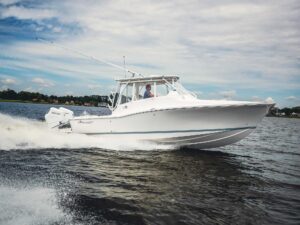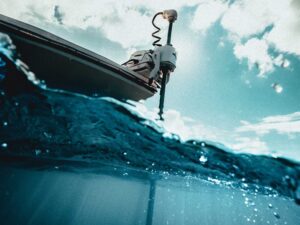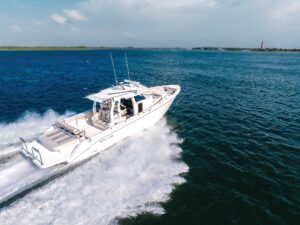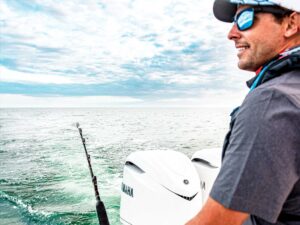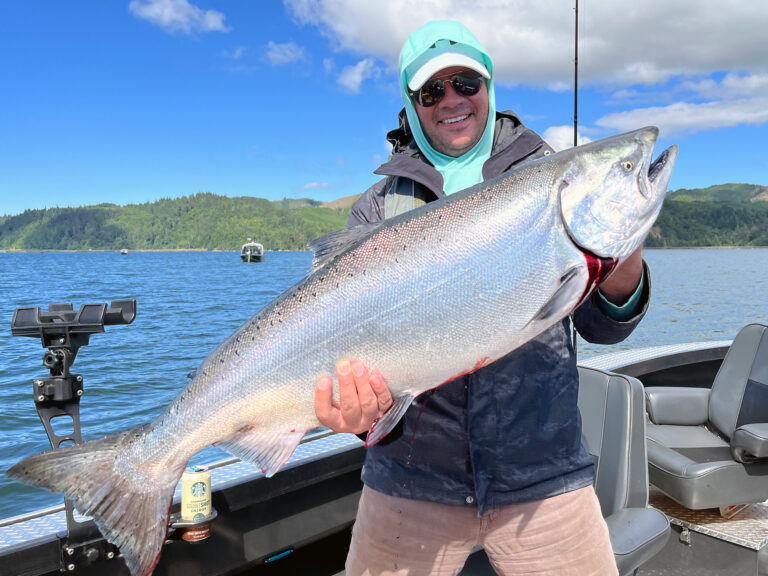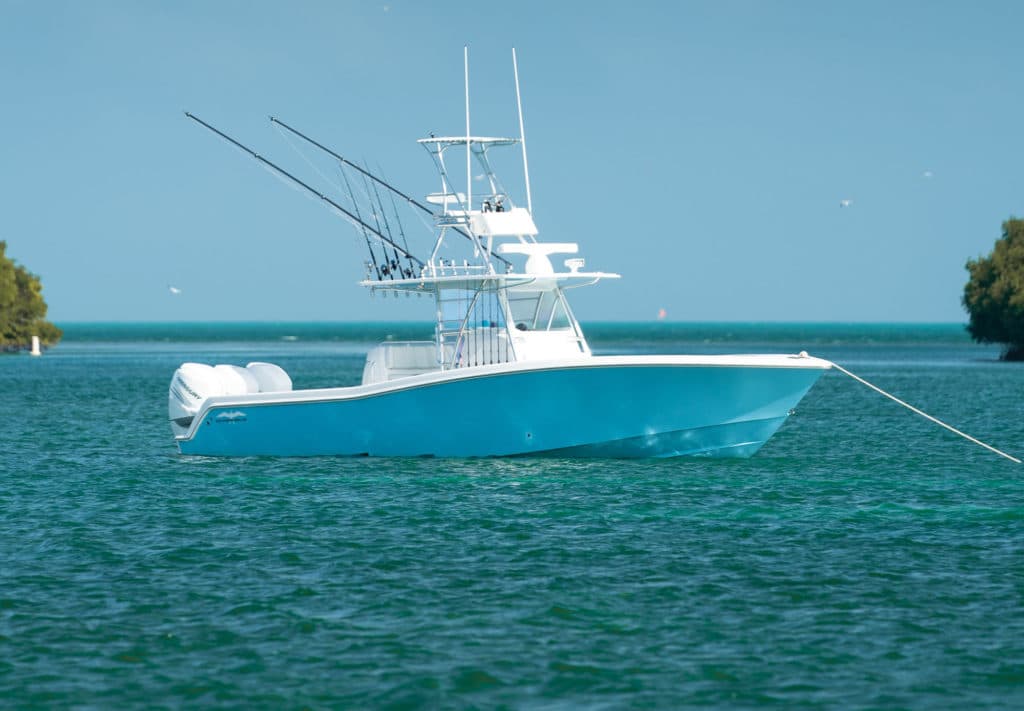
Two factors motivate anglers to commission fishing towers on their boats, says Bill Cordes, vice president of sales for Invincible Boats. “Many are simply intrigued with the idea of having a tower,” Cordes explains. “Towers look cool, and so some buyers want one based on that factor alone. Then there are the hardcore anglers who focus purely on functionality when it comes to fishing for offshore species such mahi, marlin or sailfish.”
A tower elevates your point view to let you see fish from a greater distance on the surface and deeper as you look down in the water around the boat than you might from deck level, lending anglers an advantage when it comes to spotting fish.
No matter which category of buyer you might fall into, you need to consider a number of factors when choosing a tower for your fishing boat, be it a model that you’re ordering new or an existing one, according to experts.
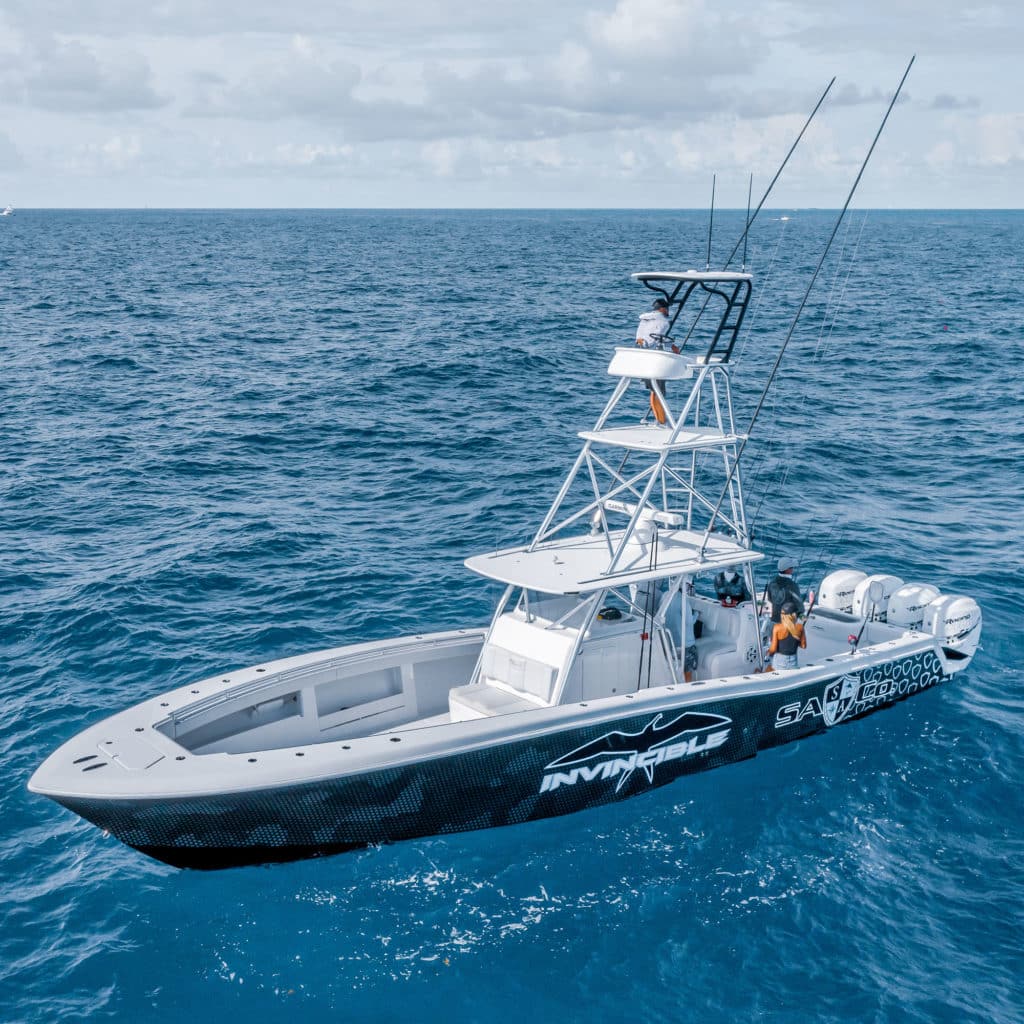
Elevation Options
Three types of towers for fishing boats exist today, each known in ascending order of elevation as console towers, marlin towers and gap towers. “It’s all about height,” says John Brownlee, director of marketing for Yellowfin Yachts. “Pick the tower based on how high you want to be; the higher the tower, the better the visibility.”
That said, the size of the boat also affects tower height. For example, taller gap towers require a larger boat to help ensure vessel stability. That means a boat that is at least 35 feet in length overall and a minimum beam of 10 feet.
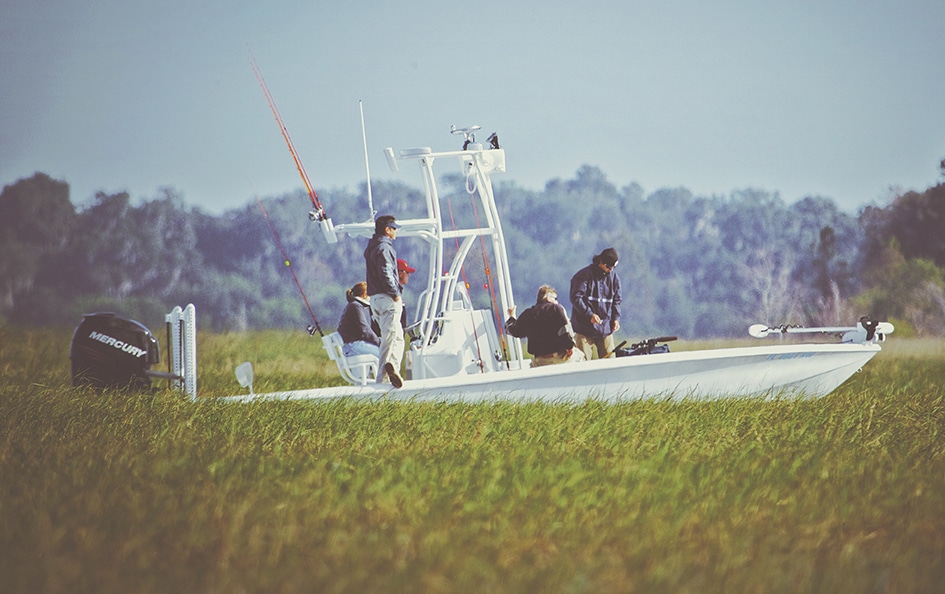
Console Tower
With a console tower, you stand on top of the center console or on a small platform just above the console for extra elevation. “These work well on smaller fishing boats such as the Yellowfin 24 Bay or 26 Hybrid,” Brownlee points out. Offering about four to five feet of extra elevation, they are great for techniques such as cruising the edge of the mangroves, marsh grass or other shallow waters while looking for species such as redfish.
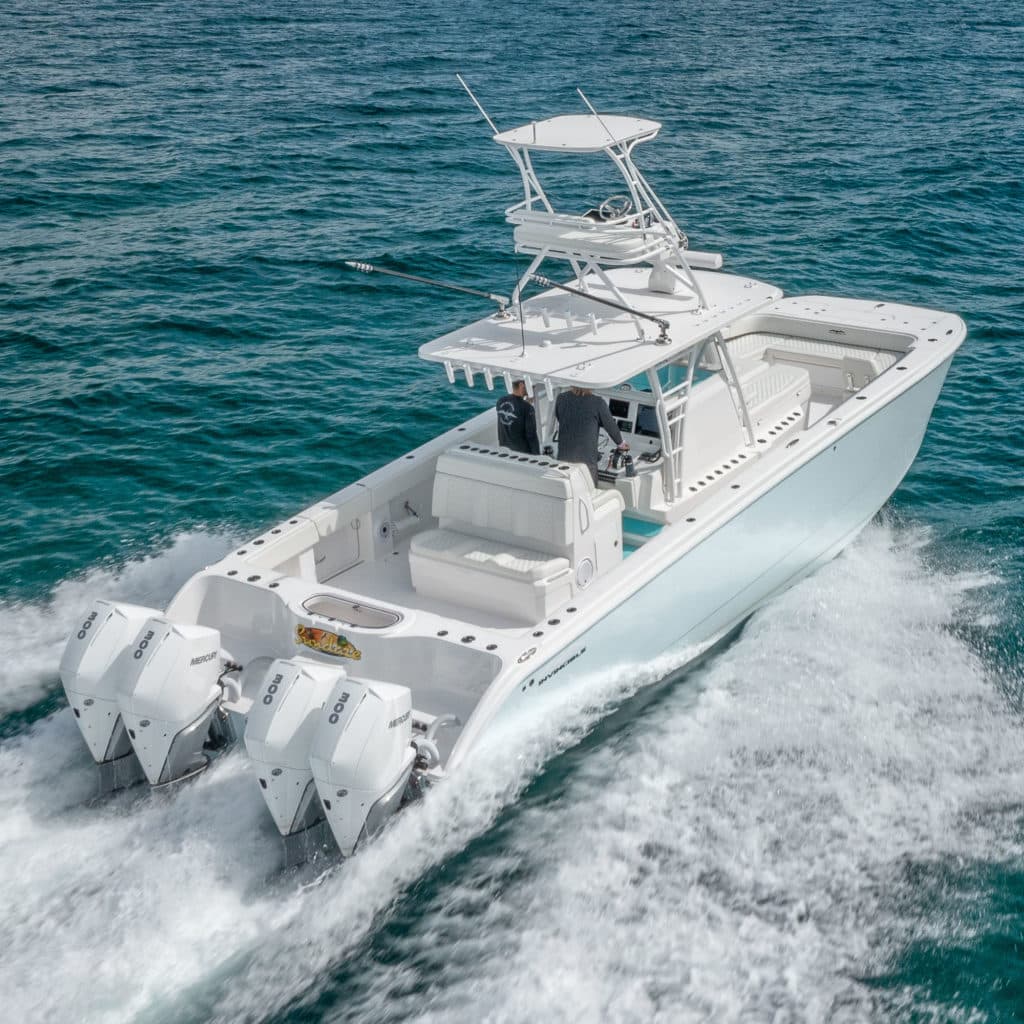
Marlin Tower
With a marlin tower, the hardtop provides the base for the helmsman while standing aloft. Offering about six to seven feet of extra height, marlin towers prove to be the most popular among offshore anglers. “The majority of the Yellowfin models (which range up to 54 feet in length) go out with marlin towers,” Brownlee says.
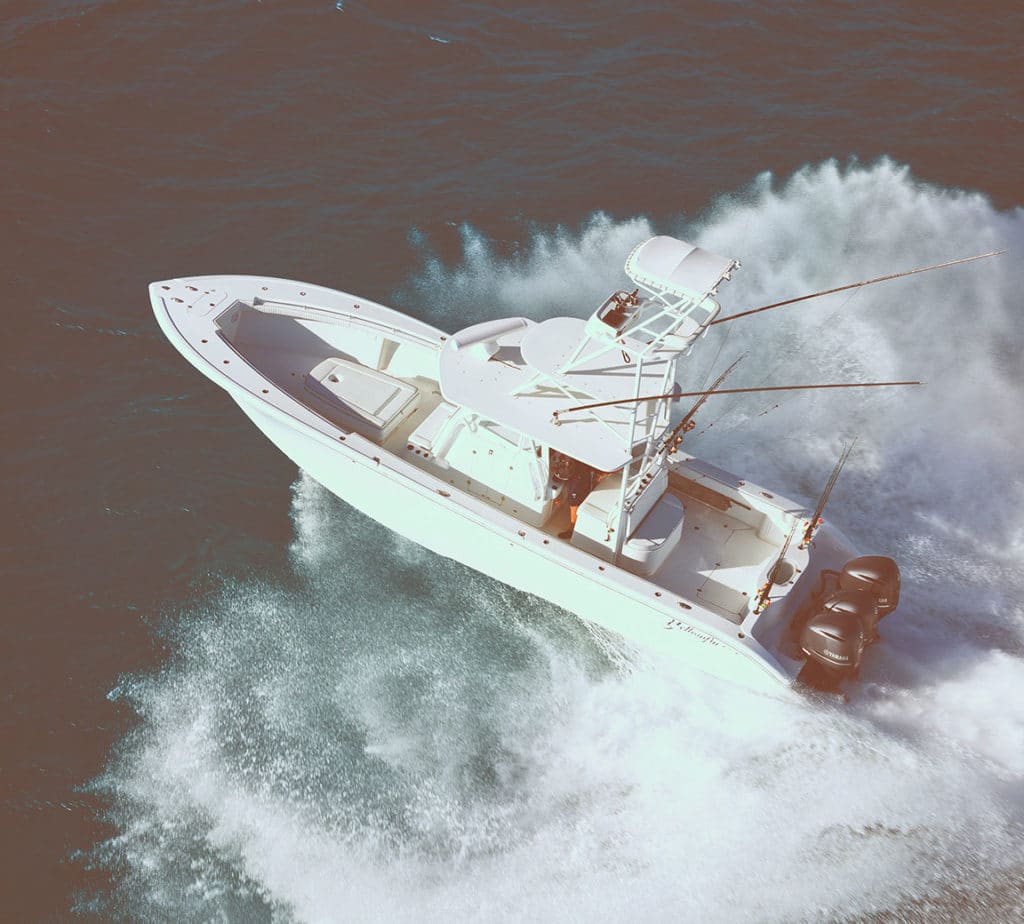
Gap Tower
Tallest of all, gap towers are so named for the space between the hardtop and the platform above it where the helmsman stands. These offer 12 to 14 feet of extra elevation, are the most expensive of all towers, and are largely reserved for offshore boats with lengths overall measuring 35 feet or more and beams 10 feet or greater.
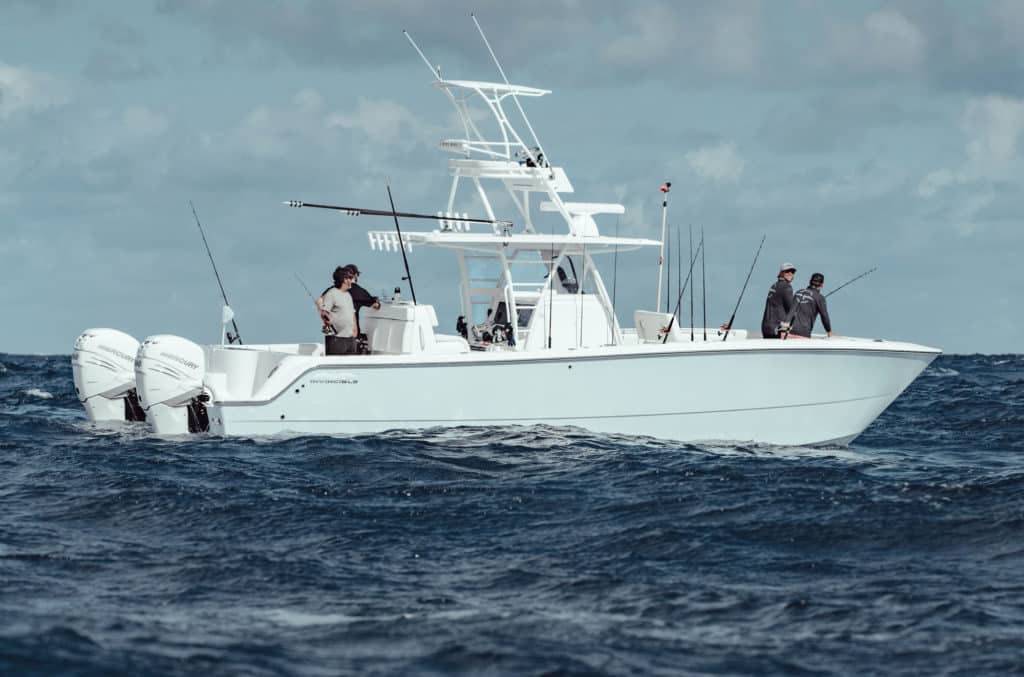
Efficiency and Roll
While towers enhance visibility, they also hamper cruising efficiency and accentuate roll. “A tower of any sort increases wind resistance, and that cuts down on speed and fuel economy,” Brownlee points outs. Even though virtually all towers feature lightweight aluminum pipework, they still add weight aloft. That means a tower can also make a boat more tender, which will exacerbate roll in a beam sea.
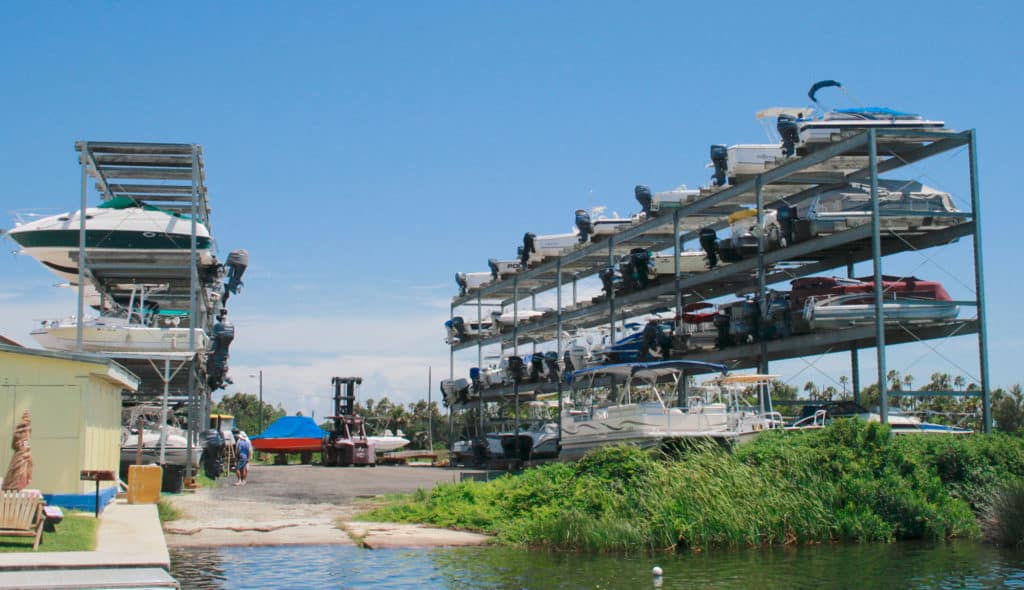
Storage and Transit
There are also storage and transit considerations. For example, if you plan on dry-stack storage, talk to your marina about the maximum height the facility can accommodate. This might limit the tower height or preclude one altogether. Finally, remember that towers might limit transit under bridges. At the very least, you might need to plan trips to coincide with the regularly scheduled drawbridge openings to and from the fishing grounds.
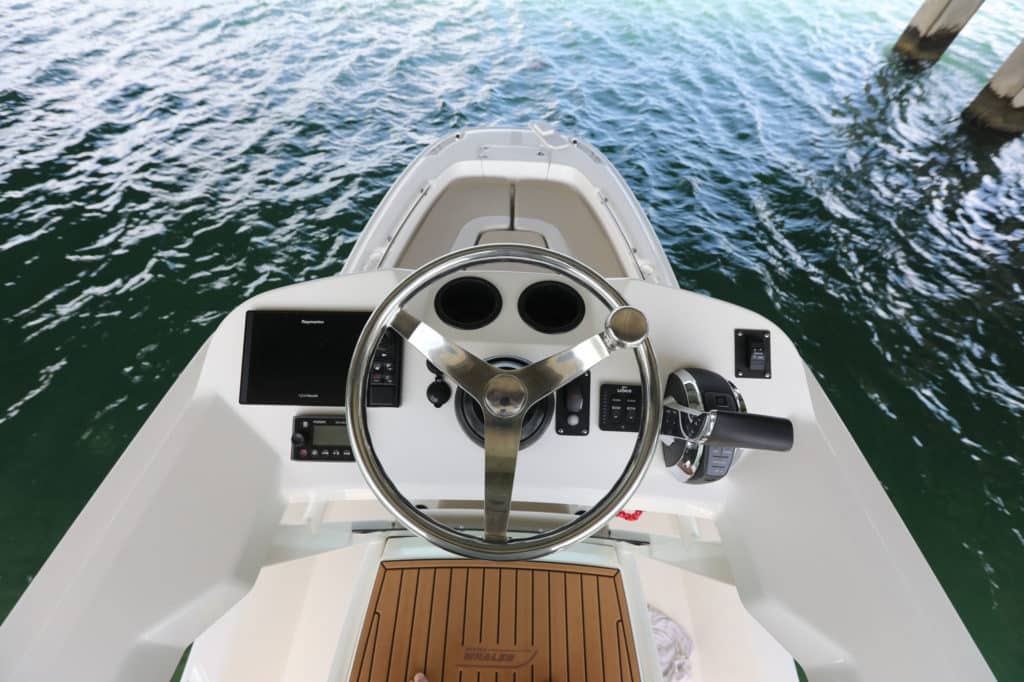
Station Considerations
Virtually all towers feature full controls today, says Cordes. “Second stations are must-have items on towers,” he says. “Today, the installation process is much simpler than in the past, thanks to electronic throttle-and-shift, as well as electric steering.”
When ordering a tower, make sure you specify which marine electronics and other controls you want aloft, so that the fabricator can allow space for these items.
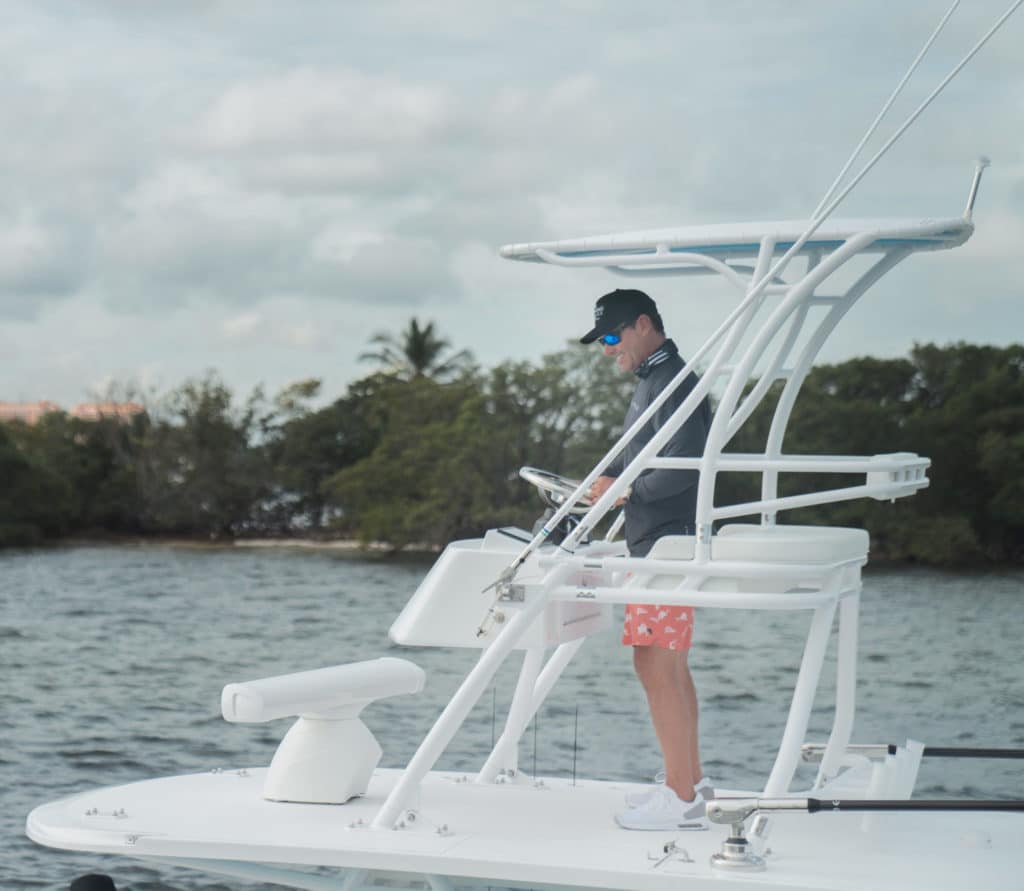
Top and Bottom
You will need to decide if you want shade for the second station in the form of a buggy top, especially if you plan on long hours of trolling while aloft. Today, these are usually lightweight fiberglass hardtops, sometimes with black aluminum pipework to help reduce glare while scanning the waters. For extra comfort, many second stations come with flip-up bench seats, as well as padded rails to cushion the helmsman in rough seas.
Read Next: Towers and Platforms for Fishing Boats
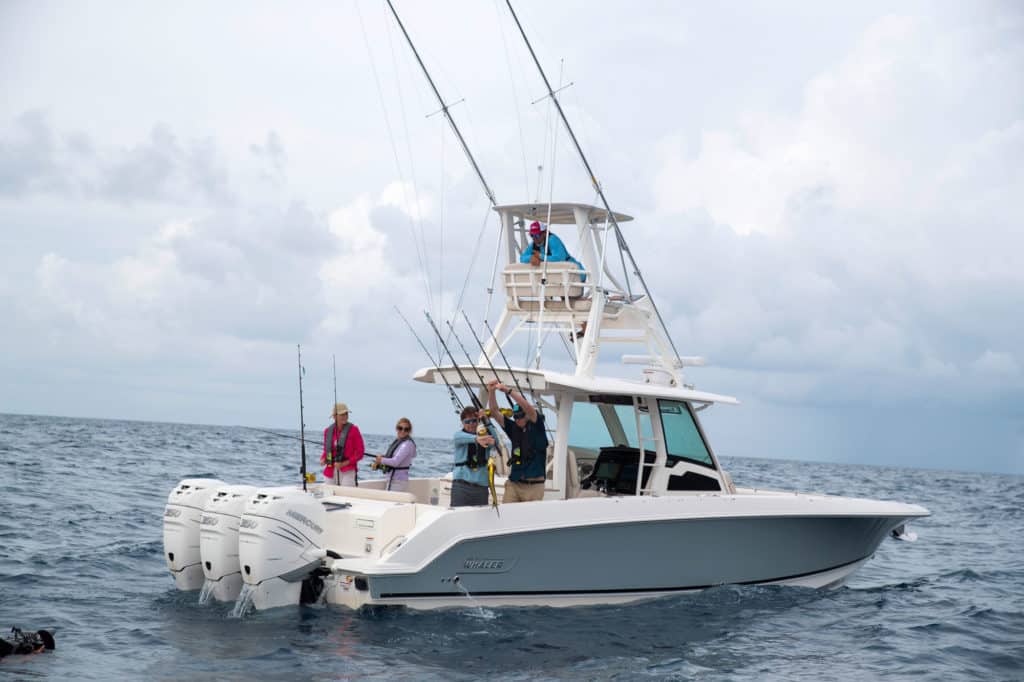
Pipework Finish
The best towers feature powder-coated finishes versus the traditional silver-anodized finishes. Powder coating is applied electrostatically to metal components as a dry polymer powder, then heat cured. It creates a hard finish that’s tougher than conventional paints.
“All aluminum rails and pipework on Invincible boats are powder-coated as standard,” Cordes says. “Today’s powder-coating processes result in a durable scratch- and chip-resistant finish that is corrosion resistant and requires minimal care.”
Powder-coating also allows for different color choices. “Yellowfin offers several choices in whites, grays and blacks to complement the color scheme of a boat,” Brownlee explains. “Not only is powder-coating far superior to anodizing, it also preserves the resale value of the boat.”
Ultimately, the key to getting the best tower for your boat and fishing needs lies in working closely with the boat builder or dealer when ordering your new boat. If commissioning a tower for an existing boat, use the same working partnership with the tower fabricator to help ensure you end up happy with finished product.

